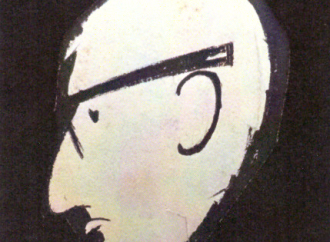Many around the world tune in every September to the annual General Assembly of the United Nations (UNGA). Since the first UNGA in 1946, leaders have addressed their fellow UN members.
Many addresses have been incredibly memorable, from Nikita Kruschev banging his shoe to Hugo Chavez suggesting that the smell of sulphur in the room emerged from the “devil”, George W. Bush, or Donald Trump calling Kim Jung Un “rocket man”. This year’s UNGA, the 77th, did not have such a spectacle, but it was interesting on the issue of reforming the UN Security Council, something that has not successfully taken place since 1963.
The United Nations Security Council comprises 15 members. Five are permanent (United Kingdom, United States, France, China, and Russia) and have the power to veto resolutions; 10 are elected for two-year terms and do not have a veto. Since its inception, many states have been dissatisfied with the two-tier membership structure. Biden’s comments on UNSC reform captured headlines because they demonstrate an unexpected American openness to changing the membership structure of the Council. In his address on September 21, Biden stated:
“I also believe the time has come for this institution [the UNSC] to become more inclusive so that it can better respond to the needs of today’s world…That is also why the United States supports increasing the number of both permanent and non-permanent representatives of the Council. This includes permanent seats for those nations we’ve long supported and permanent seats for countries in Africa, Latin America, and the Caribbean.”
There are competing proposals for reforming the UNSC, and it is unclear what the United States would propose. Reform is also nothing new – efforts have been made over the years, including notably under Secretary-General Kofi Annan – and it has been a topic in scholarly literature for nearly as long. However, large-scale reform has only been successful in 1963, when the Security Council’s structure was changed and the UN Charter was amended for the only time. The 1963 reform, known as UNGA Resolution 1991 (XVIII), represented a shift forward for the UN but also set a foundation for many of the dynamics at the Council today. It is helpful to look back at the past to understand reform in the present.
A/Res/1991 (XVIII) made two substantive changes to the Council that came into practice for the year 1965: (1) it expanded the membership from 11 to 15 by expanding the number of elected members from 6 to 10; (2) it formalized regional groupings in the allotment of these ten seats. This reflected three key changes and challenges the UN had faced in its first two decades. First, membership in the United Nations increased through the anti-colonial struggle and newly independent states. By 1963, the UN had more than doubled its membership from 1945. These states increasingly sought membership on the Council and used the United Nations in the 1960s to advance their efforts. The Non-Aligned Movement was becoming increasingly powerful, and the UN was a site of their anti-colonial activism.

Second, the Charter stipulated that the criteria for elected members should be determined “in the first instance to the contribution of Members of the United Nations to the maintenance of international peace and security and other purposes of the Organization, and also to equitable geographical distribution”. These two stipulations were often in tension, as many states, such as Canada, were focused on electing states (or seeking seats) based on their contribution to the organization. Others, such as Australia, were interested in seeing seats distributed based on geography. This led to significant disagreement and struggle.
Third, states had begun forming informal groupings through which they elect members of the UNSC. These informal groupings were also subject to contestation. For example, the Commonwealth had formed an informal group wherein the disagreement between Canada and Australia played out. Eastern European states had also formed an informal group, but by the 1960s, newly-independent African and Asian states were pursuing those seats to increase their reputation. These groups often overlapped and were difficult to decipher.

A/Res/1991 (XVIII) created five official groups under which states sought ten seats: Western Europe and Others (WEOG), Latin America and the Caribbean, Eastern Europe, Asia-Pacific, and Africa (though the last two are sometimes considered as one). This created three significant changes that still shape the UN today and are the basis upon which later calls for reform draw.
First, it changed the nature of the UNSC election process. By formalizing groups, states had clear competitors and new norms of election procedure developed for each group. Today, each group has a different approach; some have primarily competitive elections, whereas some have a norm of rotation.
Second, within the groups, state relationships have changed. For example, before 1963, in this specific context, Canada saw itself as best positioned in the world as a leading member of the Commonwealth. This was both through the forces of imperial history and because officials at the time felt that it did not have a geographical “region” the way other states did. By caucusing with WEOG, Canada had to change how it portrayed itself and related to others to compete against many European states.
Finally, new forms of stratification and informal hierarchy emerged in the UNSC context. While many often see increased membership as a good thing, leading to more equality, it can often create more inequality. A/Res/1991 (XVIII) created new rules for inclusion and exclusion while maintaining two membership tiers. However, regional groups did not receive a proportionate number of seats, with WEOG overrepresented and Africa and Asia underrepresented.
Ultimately, both the UNSC’s distribution of seats and its elections procedure are still governed by this resolution, and its long-reaching effects demonstrate the magnitude and weight of reform. Future reform efforts should consider the way that not just formal rules but informal norms, practices, relations, and forms of hierarchy can be shaped by such efforts.









